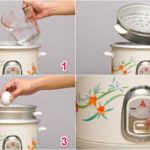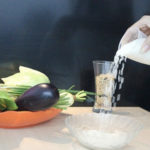Directly rinsing rice in the pot
To increase convenience, many users have the habit of rinsing rice directly in the inner pot of the rice cooker and believe that this is a harmless action. However, whether the inner pot has a non-stick coating or not, the manufacturer has a protective layer on the surface of the inner pot to ensure safe cooking for users.
Therefore, rinsing rice directly in the inner pot can easily scratch the protective surface, not only reducing the aesthetics of the rice cooker but also making it unsafe for cooking, especially with non-stick pots. The best advice is to rinse the rice with a strainer or a small bowl and then pour the rice into the rice cooker and add water before cooking.
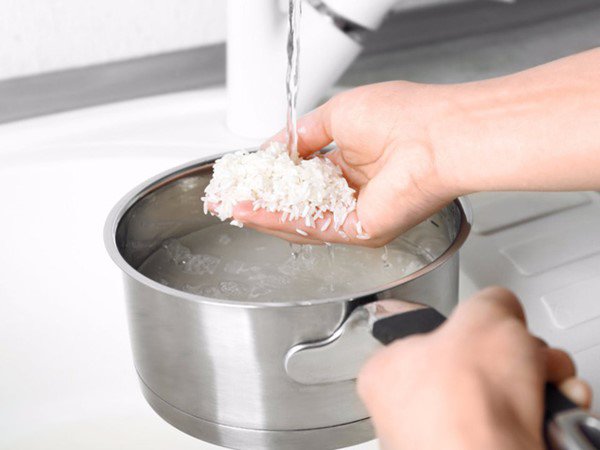
Not drying the inner pot before cooking
This action indirectly damages the thermal insulation of the rice cooker because water can cause discoloration or blackening of the pot’s surface and the heating plate at the bottom, leading to reduced aesthetics and the risk of fire in case of electrical leakage, reducing the durability of the cooker. Users should always remember to dry the outer surface of the rice cooker before cooking to protect your rice cooker and make it safe and durable.
Placing the inner pot into the cooker with one hand
With the slightly concave design of the inner pot of the rice cooker, placing them into the cooker with one hand can cause uneven contact with the heating plate, resulting in unevenly cooked rice.
In addition, this action can also damage the thermal insulation due to contact, causing the rice cooker to operate unstably. Please gently place the inner pot into the cooker with both hands, rotate it half a turn left/right to ensure even contact, and enjoy well-cooked rice.
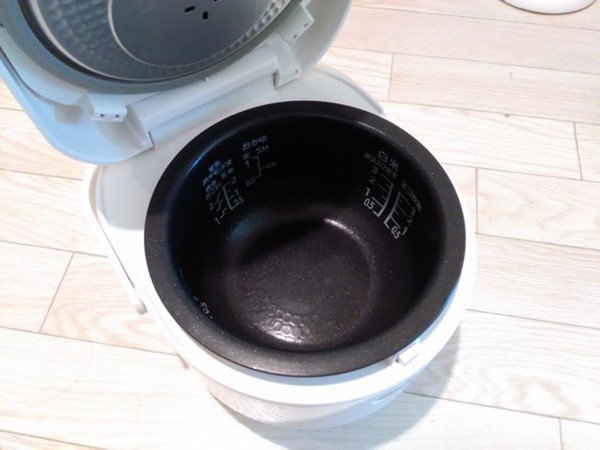
Pressing the “Cook” button multiple times
When you want to continuously reheat rice, create burnt rice, or stew/steam/bake with the rice cooker, you need to press the “Cook” button multiple times to reach the desired heat level…
This can easily cause the thermal insulation of the rice cooker to be messed up, causing the button to jump too early (undercooked rice) or too late (overcooked rice). It is best to minimize the need to press the “Cook” button multiple times each time you use the rice cooker.
Using the rice cooker function incorrectly
If it’s not a multifunctional electronic rice cooker, regular rice cookers’ main function is only to cook and reheat rice, some may have additional functions for cooking porridge/steaming vegetables or baking cakes.
Therefore, many users try to use their regular rice cookers for stewing, simmering, or making some high-temperature cakes, which requires pressing the “Cook” button on the rice cooker multiple times. As mentioned, this action will eventually damage the thermal insulation, the reason why rice is either undercooked or overcooked.
Please use the rice cooker’s proper function to ensure durability and safety. If you have diverse and frequent cooking needs, you may consider investing in a multifunctional electronic rice cooker that is very convenient for cooking delicious rice.
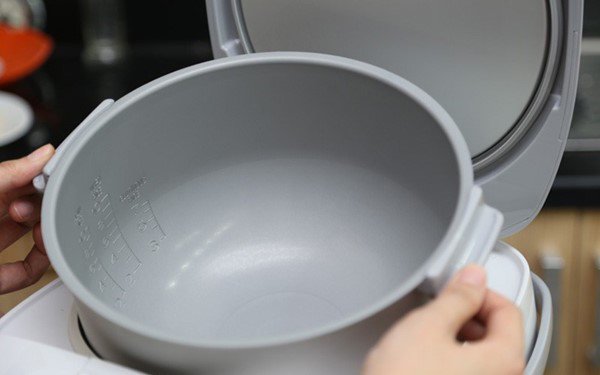
Scrubbing the pot with a hard brush
Hard brushes or metal spoons are not suitable utensils for the rice cooker because the inner lining is coated. Don’t try to scrub it clean at all costs. Use a sponge or soft cloth to clean the pot.
Reheating old rice
Using the rice cooker to reheat a portion of old rice by taking it out of the refrigerator, adding a little water, and turning on the cooking mode. This method is not recommended because it creates a reaction between cold rice and water. Instead, you should reheat the rice using a microwave instead of damaging the pot in this way.
According to Thoidaiplus
Discover How to Achieve Deliciously Aromatic & Tender Rice Using an Electric Rice Cooker
Do you want to make fluffy, sweet, and non-burnt rice every time? Look no further than this article to learn how to make mouth-watering rice with an electric rice cooker! We provide the tips and tricks you need to get the perfect texture from your rice, whether it’s in a regular or electronic model.



























